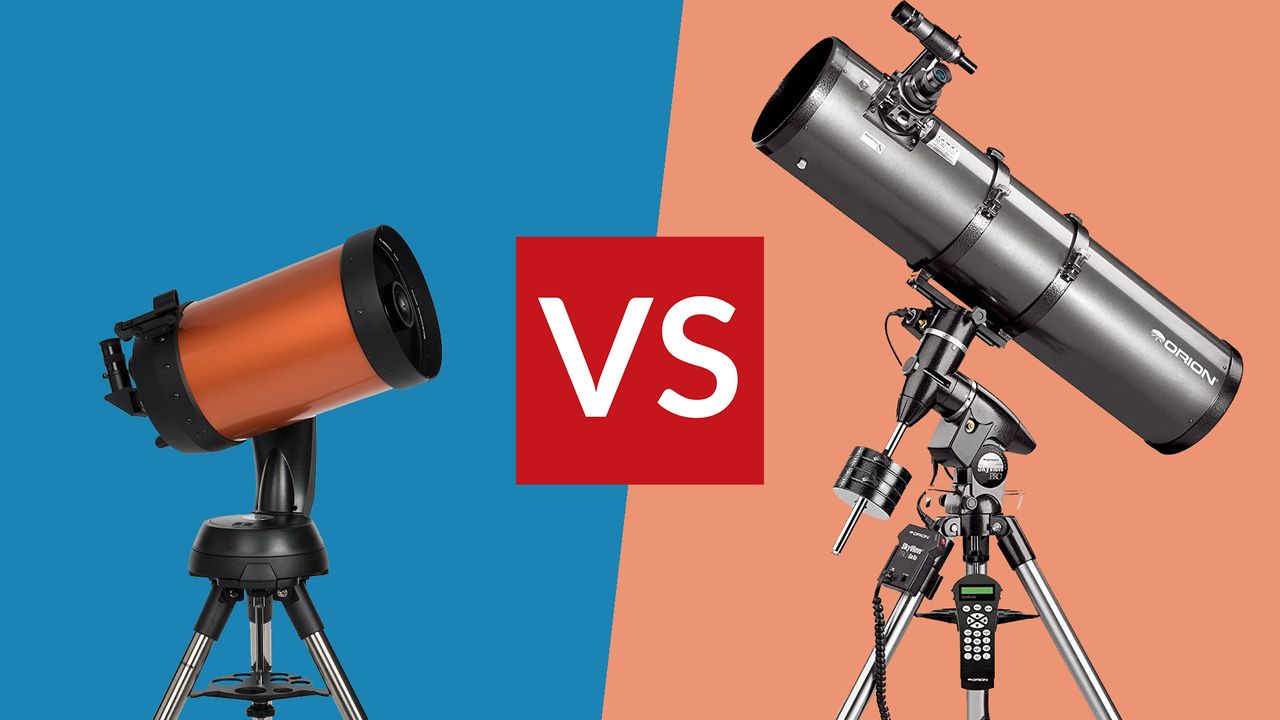

If you have a decent-sized telescope budget to play with, two of the best telescopes you can buy are the Orion SkyView Pro 8 GoTo reflector telescope and the Celestron Nexstar 8SE telescope. While fledgling stargazers who want to view the Moon should be happy with any of the picks from our best beginner telescope guide, if you're seeking something more 'grown up' and want to delve deeper into astronomy, you'll need to spend a bit more and select a telescope with a bigger and better level of spec.
It's great if you have the cash to splash on a high-end telescope with all the bells, whistles and gizmos, but if you're spending big, you want to make doubly sure you're not making an expensive mistake – and that's where our comparison guide comes in. Our two contenders may typically be out of the reach of a fair few casual observers – no pun intended. But for the dedicated astronomy enthusiast, or hobbyist who wants to travel further through the stars than man has boldly gone before, they're still an achievable goal.
The big and bold Orion SkyView Pro 8 GoTo Reflector Telescope is aimed at serious stargazers. Its impressive 1000mm focal length is capable of letting our imaginations reach into deep space, while its computerised features can pinpoint and zero in on heavenly bodies of visual interest.
A high-end and high tech alternative telescope comes from the likewise familiar Celestron brand, which offers a huge range of devices for various budgets and skillsets. Here we've picked out its top-of-range Celestron Nexstar 8SE Telescope as a close competitor of the Orion SkyView Pro 8 GoTo Reflector Telescope. It's not only a close match for price but also for feature set, as the Celestron similarly features a degree of computerised operation. But which of our close contenders for the best high-end telescope you can buy will best suit your own requirements? Read on to find out…
- Want to try binos instead? These are the best binoculars right now (including some astronomy options)
Orion SkyView Pro 8 vs Celestron Nexstar 8SE telescope: design and features
Key features of the chunky Orion SkyView Pro 8 GoTo Reflector Telescope include a massive 203mm objective lens and generous 1000mm focal length, twinned with an f/4.9 aperture. These combine with the aim of being able to resolve fine detail at high power.
As well as the 'scope itself, the box includes a 8x40 finder scope, 25mm and 10mm 1.25-inch eyepieces, telescope tube rings plus Starry Night astronomy software. A key advantage is being able to discover the must-see sites thanks to its computerised 'GoTo' system via access to a huge database. In practice internal stepper motors guide the scope to the celestial target, placing it directly in the eyepiece's field of view. The ability to automatically locate and track such objects is one of the biggest features of the Orion SkyView Pro 8 GoTo Reflector Telescope.
Naturally we also get a stainless steel tube construction tripod included in the box, upon which, claims Orion, the telescope will feel like it's floating on air. Just as well, as the set up weighs a sizable 7.5kg. But its good quality optics are the feature worth focusing on here the most.
Sign up to the T3 newsletter for smarter living straight to your inbox
Get all the latest news, reviews, deals and buying guides on gorgeous tech, home and active products from the T3 experts


Likewise feature-packed is the competing Celestron Nexstar 8SE Telescope. This offers a powerful 2032mm focal length – double that of the Orion – as well as matching 8-inch optics, here married to an f/10 aperture. So, in theory, while the Celestron lets us reach further into deep space, which is a definite advantage, the image delivered may not be universally as bright as the f/4.9 aperture offered by its competitor. The highest practical magnification recommended by Celestron for its high-end telescope, is, however, a whopping 480x.
This is a Schmidt-Cassegrain ‘scope, which means it’s a member of the ‘catadioptric’ family using a combination of mirrors and lenses to gather and focus the light. Software is also provided here, this time of the Starry Night SE variety, which trumps the basic package by featuring telescope control capability for computerised telescopes.





Specs: Orion SkyView Pro 8 GoTo reflector telescope
- Optical design: Reflector
- Objective lens diameter: 203mm
- Focal length: 1000mm
- Focal ratio: f/4.9
- Magnification: 40x, 100x
- Software supplied: GoTo
- Optical tube length: 38-inches
- Tripod: Stainless steel construction
- Weight: 7.5kg
Specs: Celestron Nexstar 8SE telescope
- Optical design: Schmidt-Cassegrain
- Objective lens diameter: 203mm
- Focal length: 2032mm
- Focal ratio: f/10
- Magnification: Up to 480x
- Software supplied: GoTo
- Optical tube length: 17-inches
- Tripod: Stainless steel construction
- Weight: 4.08kg
Orion SkyView Pro 8 vs Celestron Nexstar 8SE: usability
Unlike more affordable entry-level models, some initial user assembly is required here. The Orion SkyView Pro 8 GoTo Reflector Telescope comes supplied with a sturdy stainless steel tripod for support. In use, its 8-inch parabolic mirror delivers a bright view of the heavens thanks to being equipped for greater light transmission; in fact its maker claims it allows in 73% more light than a 6-inch scope.
What's more, a 2-inch Crayford focuser comes as standard with the high-end Orion and is likewise ideal for zero-ing in on deep space objects. The optical tube is reasonably weighty at 7.5kg, suggesting this is one for setting up in your home 'observatory', where you'll obviously have access to a required mains supply, rather than taking camping.
Resting on a sturdy steel tripod with accessory tray, the Celestron Nexstar 8SE Telescope similarly offers good light gathering ability thanks to its equally large 8-inch scope, meaning that it is likely to deliver decent views of deep space objects. If your budget doesn't quite stretch to this particular example, there are less well-specified 4-inch and 6-inch models in the Celestron series too. Like its Orion branded rival you'll need a mains supply to operate it, though the Celestron also handily allows the use of AA batteries.
Orion SkyView Pro 8 vs Celestron Nexstar 8SE: price and extras
The Orion SkyView Pro 8 GoTo Reflector Telescope is supplied with access to a huge computerised database of 42,000 celestial objects. Accessing these is claimed to just require the pressing of a couple of buttons and a mains supply, while its 'GoTo' system can take us on a tour of the night sky and reveal the best sites in a particular calendar month. If you're thinking of taking pictures with this option you'll probably want to investigate further which adapter is required to suit your make of camera or smartphone.
The GoTo system on the Orion model comprises a computerised hand controller plus two stepper motors that attach to the SkyView Pro telescope mount. The GoTo controller can be utilised for a guided tour of the night sky or to seek out celestial highlights in the calendar. The manufacturer promises that the GoTo's firmware can be updated over the Internet to keep things current.
Celestron's computerised Nexstar 8SE Telescope by comparison affords access to a database of 40,000 celestial objects and can launch a sky tour feature with, again, the touch of just a few buttons. At the time of writing it was being sold with an eyepiece and filter kit with 14 accessories and a phone scope adapter to enable users to take photos of objects spotted in deep space – just to make all your Instagram followers jealous. For those users wanting to get really serious, there's an optional SkySync GPS accessory that plugs into the Nexstar's auxiliary port to download data from orbiting GPS satellites for what's promised to be quick and easy alignments.
Should I buy the Orion SkyView Pro 8 or Celestron Nexstar 8SE?
The Orion SkyView Pro 8 GoTo Reflector Telescope is a good choice if you want to look beyond the Moon and locate and view deep space objects – but it does come at a price. Its manufacturer also recommends users of ages 12 upwards, so it's a fairly advanced option and not one for letting younger children get hands on. Orion is one of the biggest players in the telescope market currently, so if this particular model doesn't fit your bill or budget there are plenty more to choose from.
The Celestron Nexstar 8SE Telescope also comes at a hefty price, though at the time of writing the next model down in the range, in the 6-inch aperture '6SE', was retailing for an outlay that's considerably cheaper, which will also make it worth further investigation. Peace of mind is however provided for this 8SE range topper via a two-year warranty. By contrast the Orion offers a fairly standard one-year's manufacturer's warranty.
In a straight comparison with the Orion, though the core spec and features set is broadly similar, the Celestron brings a bit more to the table in the shape of a longer overall focal length – in fact it's twice as long as the Orion offers – theoretically letting us delve that much deeper into space. However, both this and the Orion are from known and trusted brands, so whichever you choose you won't, ultimately, go far wrong.
Gavin Stoker has been writing about photography and technology for the past 20 years. He currently edits the trade magazine British Photographic Industry News - BPI News for short - which is a member of TIPA, the international Technical Imaging Press Association.
-
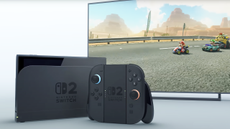 Nintendo suggests Switch 2 price will be "affordable", as it confirms launch time
Nintendo suggests Switch 2 price will be "affordable", as it confirms launch timePrevious price leaks could be true, with Nintendo's president revealing that "affordability" is important
By Rik Henderson Published
-
 KitchenAid's 2025 Colour of the Year brings a buttery warmth to every cooking space
KitchenAid's 2025 Colour of the Year brings a buttery warmth to every cooking spaceThis is going straight in my basket
By Lizzie Wilmot Published
-
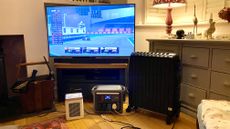 Change my mind: the smaller, the better with portable power stations
Change my mind: the smaller, the better with portable power stationsPut your portable power station to work when you’re not using it
By Derek Adams Published
-
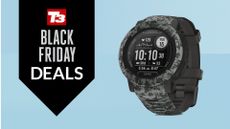 This rugged adventure Garmin is mega cheap in Walmart’s Black Friday sale
This rugged adventure Garmin is mega cheap in Walmart’s Black Friday saleThe Instinct 2 is a top watch for outdoor and sport enthusiasts
By Bryony Firth-Bernard Published
-
 YETI’s best-selling products are ridiculously cheap in Amazon’s Black Friday sale
YETI’s best-selling products are ridiculously cheap in Amazon’s Black Friday saleFancy yourself a tumbler, rambler or cooler? Amazon's reduced them all
By Bryony Firth-Bernard Published
-
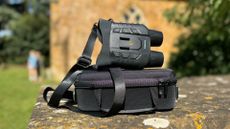 AKASO Seemor 200 night vision goggles review: unparalleled clarity for nighttime adventures
AKASO Seemor 200 night vision goggles review: unparalleled clarity for nighttime adventuresAKASO’s new NVD unlocks the night with cutting-edge colour vision technology
By Derek Adams Published
-
 8 must-have hiking gadgets for tackling cold and wet trails
8 must-have hiking gadgets for tackling cold and wet trailsWhether it be wet and rainy, or super chilly, these 8 gadgets can make your outdoor adventure even more enjoyable
By Bryony Firth-Bernard Published
-
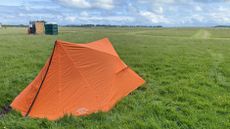 Vango Classic Instant 300 review: a festival-goer's dream tent
Vango Classic Instant 300 review: a festival-goer's dream tentSuper quick to pitch and pull down, this reasonably priced tent is spacious, tall and well-featured for festival use
By Pat Kinsella Published
-
 Is Columbia’s OutDry Extreme the best waterproof-breathable material that no one is using?
Is Columbia’s OutDry Extreme the best waterproof-breathable material that no one is using?ODX hasn’t revolutionised the outdoor apparel world in the way its creators expected it to – but that could be about to change…
By Pat Kinsella Published
-
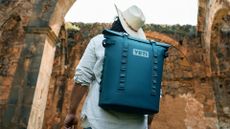 Best YETI coolers 2025: ice cold excellence
Best YETI coolers 2025: ice cold excellenceKeep food and beverage frosty with our curated selection of top-rated YETI coolers for every occasion
By Matt Kollat Last updated